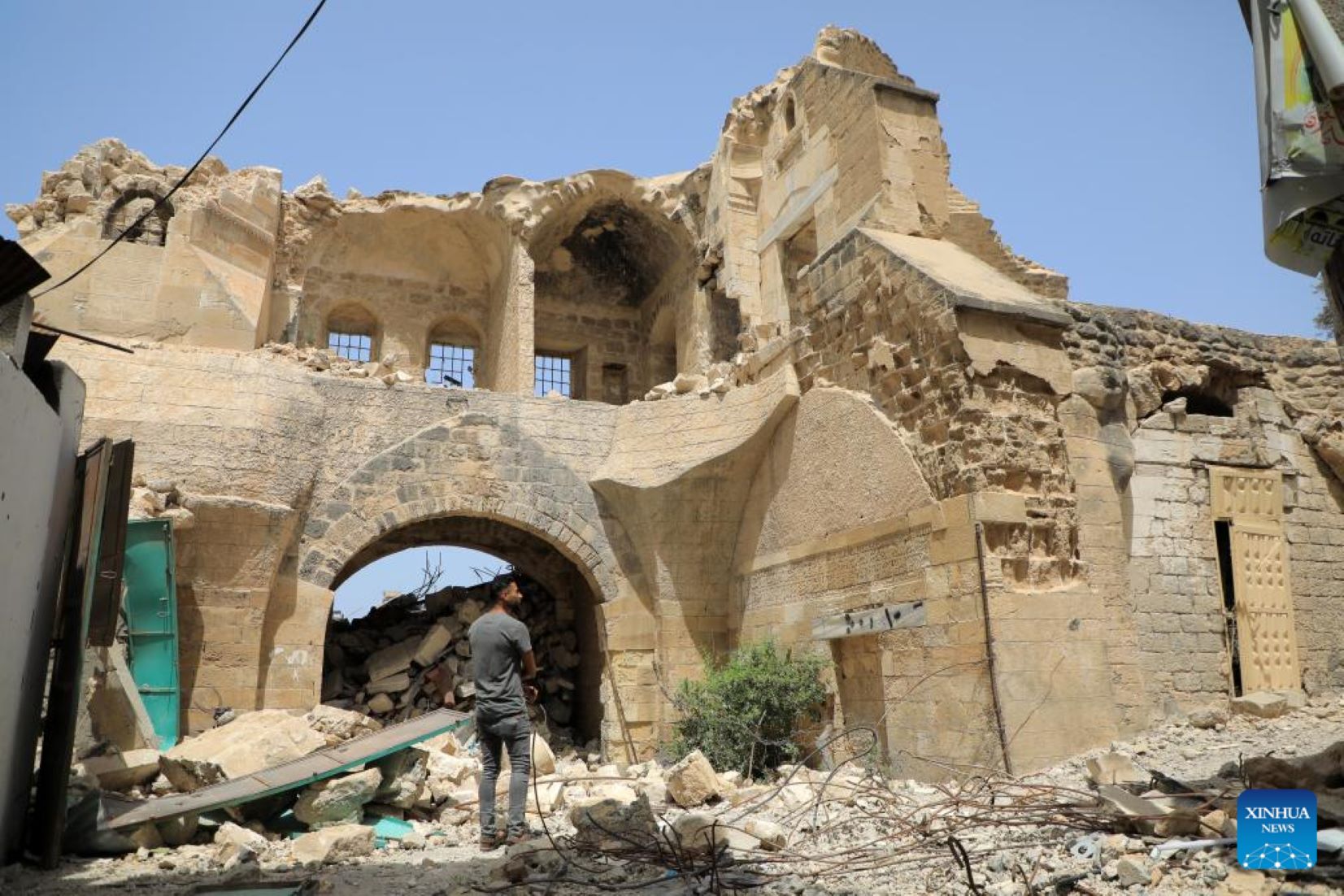GAZA, Apr 24 (NNN-WAFA) – In a state of astonishment, Samiha al-Aqqad, 86-year-old mother of eight, gazed in disbelief, at the mound-like piles of rubble, barely recognising the remnants of Barquq Castle, a historical site in Khan Younis, reduced by the Israeli army to a mere heap of debris.
“A few months ago, we had Barquq Castle, which was an essential and ancient landmark of the city of Khan Younis. It indicated the presence of civilisation, heritage, and culture in our city throughout history,” the elderly Palestinian woman, said.
“Unfortunately,” she complained, “Israel destroyed it and everything that was Palestinian in our city. Overnight, this castle and all the neighbourhoods of our city turned into nothing more than massive destruction.”
Barquq Castle was established in 1387, by Prince Younis Duadar, at the request of Sultan Barquq, one of the Mamluk sultans of the Arab-Islamic era, and the founder of the Burj Mamluk state.
During the lengthy journey between Damascus and Cairo, the two prominent cities of the Mamluk state of Burj, it was built to serve as a resting place and meeting spot for merchants and travellers.
“For many decades, we have been coming here with our parents and our grandchildren to tell them our history … Unfortunately, it is all over now,” she said.
“Why does Israel insist on destroying all our presence and existence on our land,” al-Aqqad asked, bursting into tears.
Standing beside the Al-Omari Grand Mosque in the city, which was also largely destroyed by Israeli airstrikes in Dec last year, Jamal Abu Kamil, a Gaza-based Palestinian, raised the same question.
The 42-year-old father of four witnessed several conflicts between Israelis and Palestinians in Gaza since 2008. “We have not witnessed such an Israeli war that destroyed everything in Gaza … The Zionists are not against Hamas only, but they are against our history and existence,” he said.
The 1,400-square-metre Al-Omari Grand Mosque was originally a Roman temple. It was made into a Roman church during the Byzantine era, and later converted into a mosque following the Islamic conquest.
In 1291, it was upgraded into the city’s Grand Mosque by the Mamluks. The mosque’s refurbishment was completed in 2004.
“Since childhood, I performed Friday prayers and all Tarawih prayers during Ramadan in this ancient mosque. Here, I used to conjure up history and Islamic civilisation among the crowds of worshippers. This place has a distinct historical fragrance that makes us feel proud that we live on this land,” Abu Kmail recalled.
Haitham Saba, a Gaza-based Christian, shared the same sadness.
To escape the intense Israeli bombardment in Gaza City, the 39-year-old father, along with his family and several Christians, sought refuge in the Church of Saint Porphyrius, a Greek Orthodox church, that was considered the oldest one in the city.
However, the Israeli army attacked one of the church’s outer buildings, killing 18 people and wounding dozens, including Saba’s relatives.
“Back then, Israel claimed that it targeted a place adjacent to the church, but its army deliberately hit the church and destroyed a large part of it,” Saba said. “Israel has deliberately attacked Palestinian history, whether Christian or Muslim.”
Barquq Castle, the Omari Mosque, and the Church of Saint Porphyrius are among the 200 archaeological and historical sites that were destroyed in the Gaza Strip, according to the Hamas-run government media office.
“The Israeli army attacked our historical sites and stole thousands of artefacts that were in the archaeological sites and stores,” grumbled Fadel Al-Otl, a Gaza-based Palestinian antiquities expert.
However, he complained, “We do not have anything to protect ourselves from the Zionist aggression, against our existence and our lives.”– NNN-WAFA






